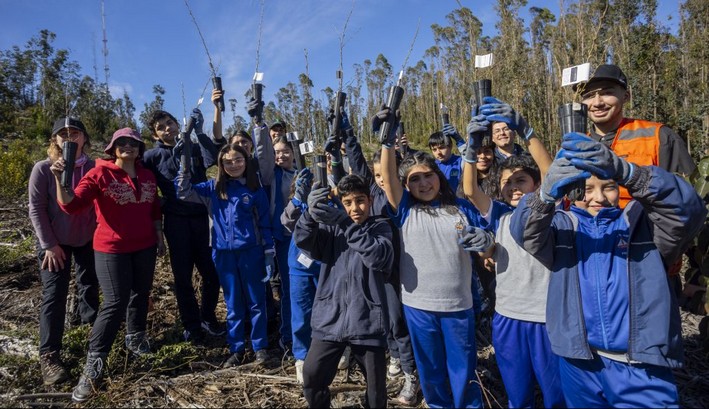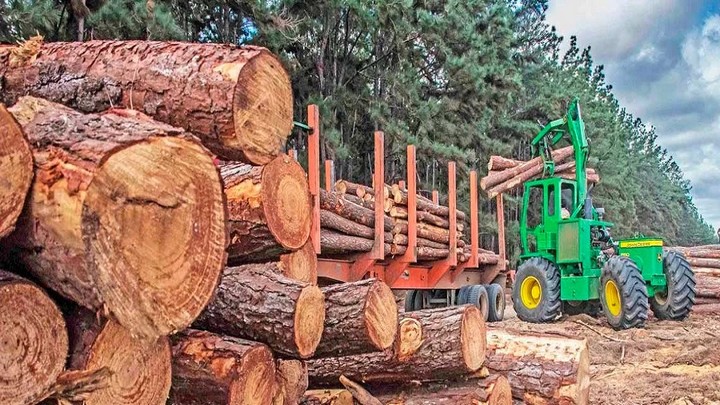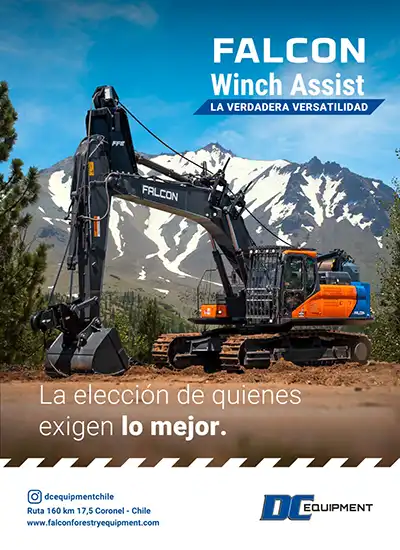NASA Concludes That Chilean Patagonia's Forests Are Among the World's Top Carbon Stores
- The study identified areas in Chilean Patagonia with ancient evergreen forests that have a high density of stored carbon.
A NASA mission in collaboration with Chile determined that the forests of Chilean Patagonia are among the ecosystems that store the most carbon worldwide, with nearly 100 tons per hectare.
The coordinated work of the U.S. space agency and Chilean scientists revealed that the carbon storage capacity of evergreen forests (where trees do not seasonally lose all their leaves) is far more significant than previously believed.
The study identified areas in Chilean Patagonia with ancient evergreen forests that have a high density of stored carbon. It concluded, for example, that on average, each hectare of Patagonian evergreen forest stores 96 tons of carbon, exceeding by 110.6% the figures reported by Chile's Forestry Institute in its mapping of stored forest carbon.
The data obtained by NASA and Chilean scientists is essential to complement the National Forest Inventory's records in hard-to-access and high-altitude areas, where conducting on-the-ground forest sampling is extremely difficult. This initiative also aims to support biodiversity conservation in Patagonia's pristine ecosystems.
"After this study, we hope it becomes even clearer that Chilean Patagonia is not only a place of indescribable beauty but also one of the planet's greatest lungs—a reminder of our collective responsibility to protect it. Every hectare of Patagonian forest is an ally in the fight against climate change," explains Taryn Fuentes Castillo, a scientist at Carbon Real, who participated in the research.
Studying the Forests of Chilean Patagonia
In 2018, NASA began firing lasers from the International Space Station (ISS) toward Earth to count and measure forests and trees across the planet. The project—called the Global Ecosystem Dynamics Investigation, also known as the "GEDI Mission"—in collaboration with the University of Maryland, primarily aims to understand how ecosystems store carbon and how they affect the water cycle and biodiversity worldwide.
Although GEDI has been scanning the entire land surface with sophisticated lasers to create the most detailed inventory of forested areas on record, space-based measurements in some regions require on-site calibrations or corrections. Whether due to persistent cloud cover, the ISS's orbit not always aligning with scientifically relevant areas, dense tree canopies, or the challenges posed by peatland ecosystems, measurements need to be supplemented with closer-to-the-ground work for greater accuracy.
The GEDI Mission faced these challenges in Chilean Patagonia, where heavy cloud cover persists much of the year and the angle of the LiDAR lasers used hinders accurate measurements. Since neither NASA nor the University of Maryland had the capacity to address this, the Chilean company Carbon Real—dedicated to Patagonian forest conservation using technology—offered its collaboration.
"We were looking for a way to determine Patagonia's carbon storage capacity as precisely as possible using technology, because we want to incentivize conservation through the revenue generated by selling carbon credits based on the natural growth of these forests. And that could be done from space. That's why we contacted NASA and began working with them, adjusting measurements with aircraft and drones using the same LiDAR technology," explains Felipe Escalona, founder and CEO of Carbon Real.
After two years of joint work, the initial findings will be presented in September in an article published in the scientific journal *Forest Ecology and Management*. As true carbon storage treasures, Chilean Patagonia's forests become a critical conservation area. However, since many of these zones lack public protection, Carbon Real has worked to ensure private conservation in certain areas.
"When the full results of this study are officially published, we must be ready to act. Patagonia is not just a tourist destination—it's a legacy for future generations. Let’s keep exploring, researching, and defending this green treasure that even surpasses the majesty of the Amazon," says Adrián Pascual, lead author of the mentioned article, a scientist with NASA's GEDI Mission and the University of Maryland.
Source:biobiochile.cl














